NASA的韦布太空望远镜在栅栏后面窥视
詹姆斯·韦伯太空望远镜拍摄的这张照片上,尘埃和明亮的星团交织在一起。明亮的气体和恒星卷须属于棒旋星系NGC 5068,在这张图片的左上角可以看到它明亮的中央棒状结构——这是由韦伯两台仪器所合成。

詹姆斯·韦伯太空望远镜拍摄的这张照片上,尘埃和明亮的星团交织在一起。明亮的气体和恒星卷须属于棒旋星系NGC 5068,在这张图片的左上角可以看到它明亮的中央棒状结构——这是由韦伯两台仪器所合成。
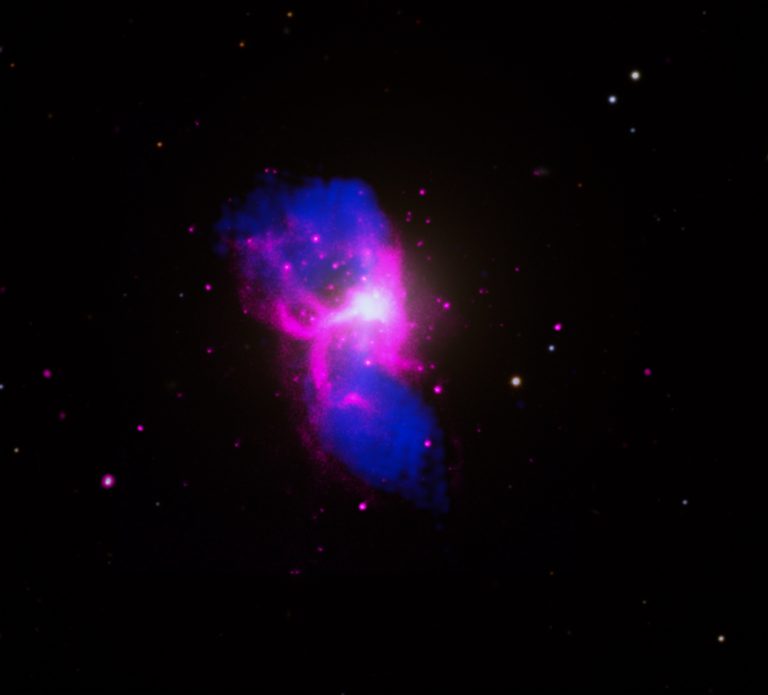
在梅西耶84星系(M84)的热气中有一个“H”形结构。来自银河系中心超大质量黑洞的喷流在高温下产生了相反方向的空洞。NASA钱德拉X射线天文台的X射线数据(以粉红色显示)与VLA的无线电数据(以蓝色显示)相结合,显示了这一点。
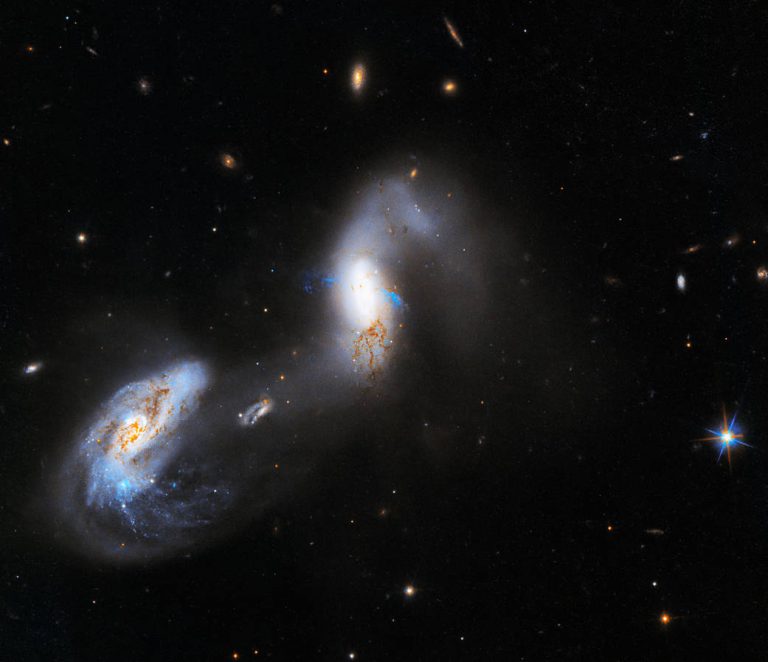
This new image from NASA’s Hubble Space Telescope shows interacting galaxies known as AM 1214-255. These galaxies contain active galactic nuclei, or AGNs. An AGN is an extraordinarily luminous central region of a galaxy. Its extreme brightness is caused by matter whirling into a supermassive black hole at the galaxy’s heart. Hubble observed the galaxy closest to the center as part of an AGN survey, with the aim of compiling a dataset about nearby AGNs to be used as a resource for astronomers investigating AGN physics, black holes, host galaxy structure, and more. Image Credit: NASA, ESA, A. Barth (University of California – Irvine), and J. Dalcanton (University of Washington); Processing: Gladys Kober (NASA/Catholic University of America) 这张来自NASA哈勃太空望远镜的新图像显示了相互作用的星系,称为AM 1214-255。这些星系包含活动星系核(AGN)。AGN是星系中非常明亮的中心区域。它的极端亮度是由物质旋转进入星系中心的超大质量黑洞造成。 作为AGN调查的一部分,哈勃观察了最靠近中心的星系,目的是汇编一个关于附近AGN的数据集,作为天文学家研究AGN物理学、黑洞、宿主星系结构等的资源。 影像来源:NASA, ESA, A. Barth (University…
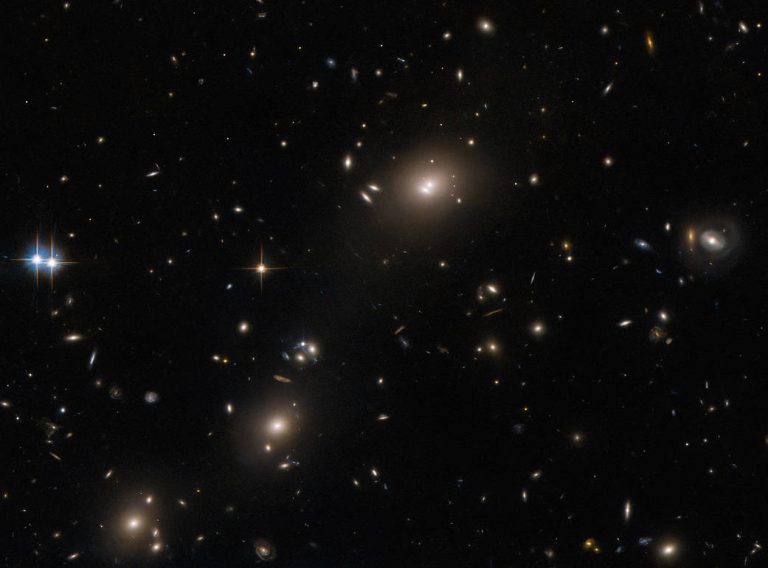
A menagerie of interesting astronomical finds are visible in this image from the NASA/ESA Hubble Space Telescope. In addition to several large elliptical galaxies, a ring-shaped galaxy is lurking on the right of the image. A pair of bright stars are also visible at the left of the image, notable for their colorful crisscrossing diffraction spikes. This collection of astronomical curiosities is the galaxy cluster ACO S520, located in the constellation Pictor and captured by Hubble’s Advanced Camera for Surveys. ACO S520 represents one of a series of Hubble observations searching for massive, luminous galaxy clusters that had not been captured by earlier surveys. Astronomers took advantage of occasional gaps in Hubble’s busy schedule to capture images of these barely explored galaxy clusters, revealing a…
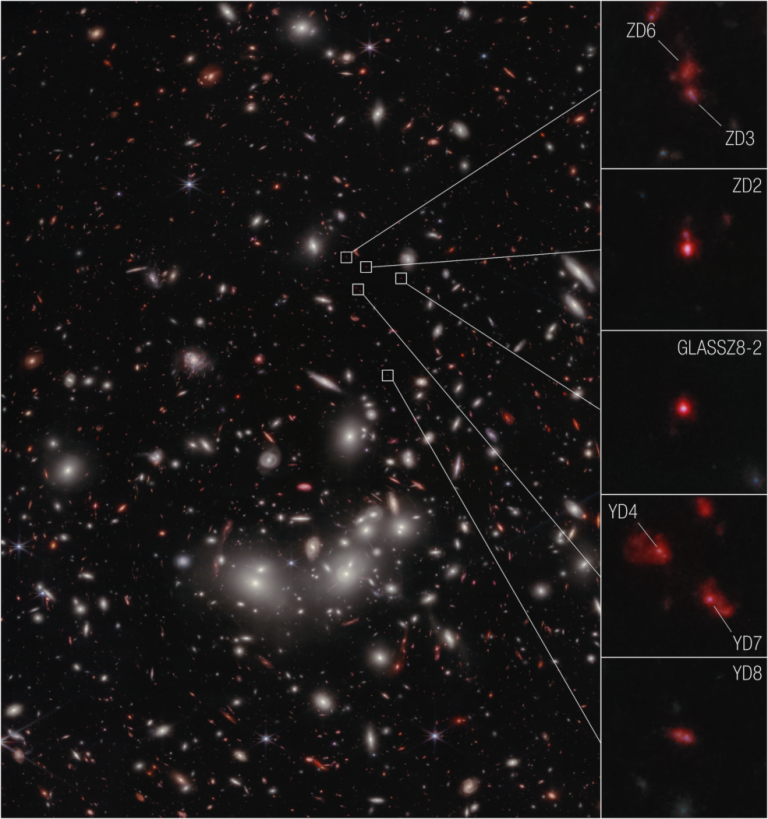
NASA的詹姆斯·韦伯太空望远镜已经开始揭示宇宙历史上迄今为止遥不可及的形成时期:星系的形成和聚集。天文学家称之为红移7.9的距离,即大爆炸后仅6.5亿年,首次证实了由七个星系组成的原星团。
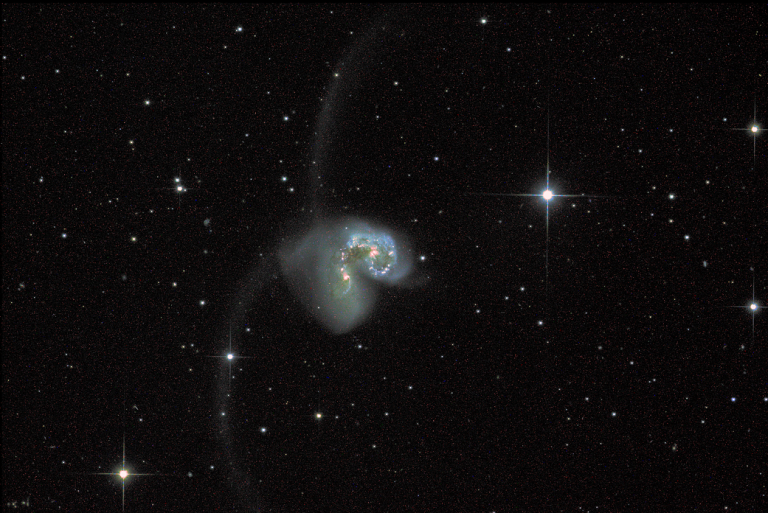
This view of the Antennae Galaxies, two large galaxies colliding 60 million light-years away, is one of the first research images from the Super Pressure Balloon Imaging Telescope (SuperBIT) that launched on a scientific super pressure balloon April 16, 2023 (local time New Zealand). This image and one of the Tarantula Nebula were captured as the balloon-borne telescope floated at 108,000 feet (approximately 20.5 miles or 33 km) above Earth’s surface, allowing scientists to view these scientific targets from a balloon platform in a near-space environment. The SuperBIT telescope captures images of galaxies in the visible-to-near ultraviolet light spectrum, which is within the Hubble Space Telescope’s capabilities, but with a wider field of view. SuperBIT’s goal is to map dark matter around galaxy clusters by…

在NASA的詹姆斯·韦伯太空望远镜拍摄的这张照片中,Arp 220就像一座闪耀在星系海洋中的辉煌灯塔,照亮了夜空。实际上,两个螺旋星系在合并的过程中,Arp 220发出最亮的红外光,这使得它成为韦伯的理想目标。
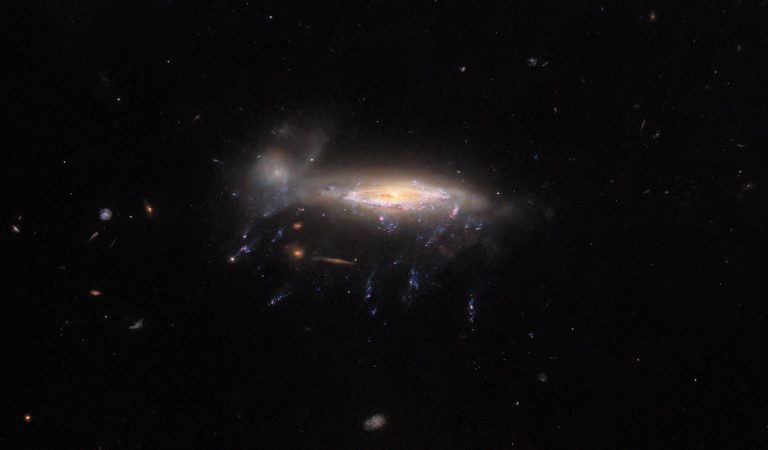
This image taken with the NASA/ESA Hubble Space Telescope shows JO204, a ‘jellyfish galaxy’ so named for the bright tendrils of gas that appear in this image as drifting lazily below JO204’s bright central bulk. The galaxy lies almost 600 million light-years away in the constellation Sextans. Hubble observed JO204 as part of a survey performed with the intention of better understanding star formation under extreme conditions. While the delicate ribbons of gas beneath JO204 may look like floating jellyfish tentacles, they are in fact the outcome of an intense astronomical process known as ram pressure stripping. Ram pressure is a particular type of pressure exerted on a body when it moves relative to a fluid. An intuitive example is the sensation of pressure you…
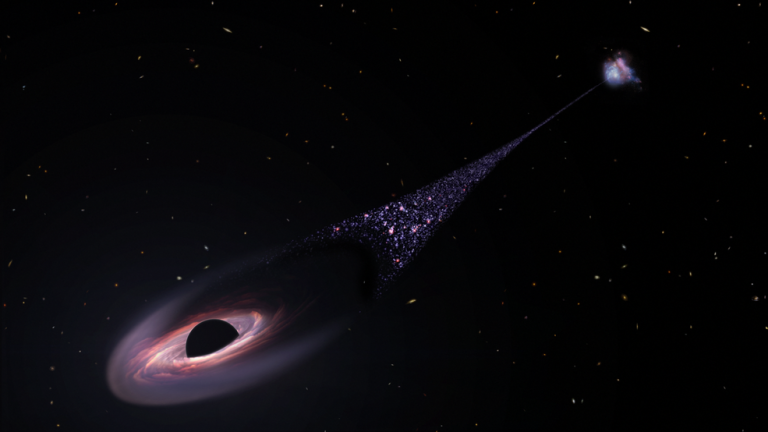
有一个看不见的怪物逍遥法外,快速穿过星系间的空间,如果它在我们的太阳系,它可以在14分钟内从地球旅行到月球。
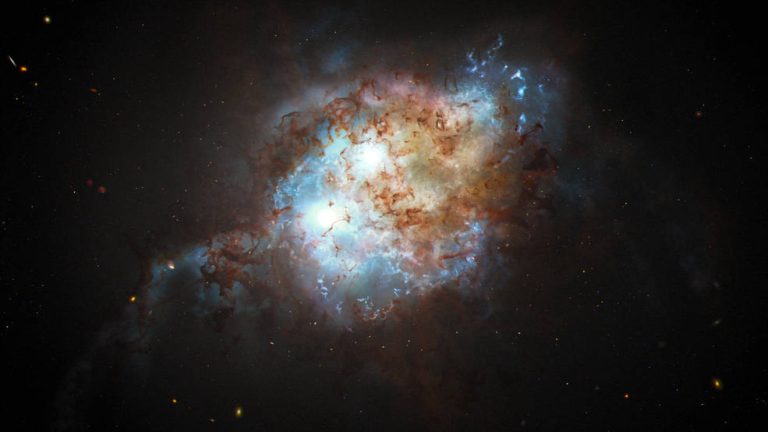
使用NASA的哈勃太空望远镜和其他太空和地面天文台,天文学家调查这些发展取得了意想不到的罕见发现:一对受引力束缚的类星体,都在两个合并的星系中燃烧。